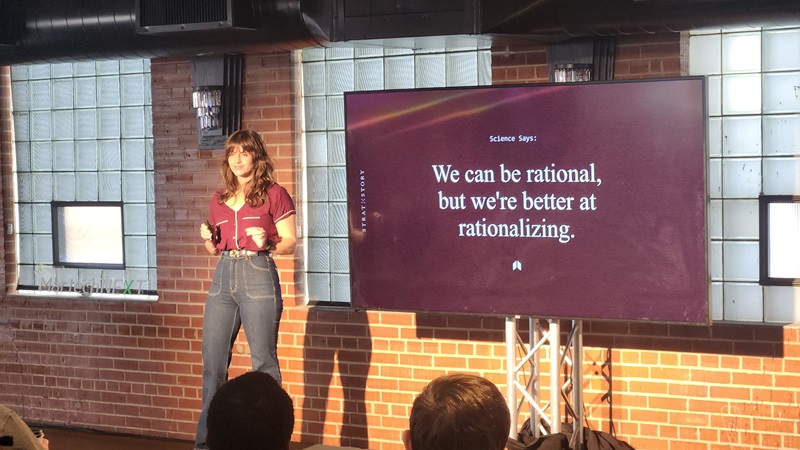At MartechNEXT 2025, Stephania Varalli’s presentation, Strategic Storytelling: The Missing Link Between Your Message & Its Impact, brought structure and insight to a topic that has become increasingly complex in our AI-driven world. Her talk wasn’t about storytelling as a creative exercise. But rather, it was about using story as a strategic framework for helping audiences make sense of information, build trust, and act with confidence.
Stephania’s perspective was rooted in data. She reminded us that 70% of buyers are already in the selection phase before they ever reach out to a vendor, and that their path includes hundreds of touchpoints. Her message: clarity wins.
In B2B, most buyers aren’t struggling to find information; they’re struggling to make sense of it.
That sense of overwhelm is compounded by cognitive bias: the tension between the fast, emotional decisions of System 1 thinking and the slower, rational processing of System 2. The job of marketers and digital experience leaders, then, is to craft messages and interactions that align with both. Logic matters, but emotion seals the deal.

Her Stratestory framework simplifies this challenge by reframing how organizations communicate value:
Clarify what you do and why it matters.
Communicate that story with empathy and structure.
Convince by building confidence, not pressure.
It’s a reminder that the real job of marketing is not to tell people what to think—but to help them form a story they can believe and defend.
Where Storytelling Meets AI
In my own presentation, Commerce Reimagined: How Content and AI are Redefining B2B Success, I built on Stephania’s foundation with a practical look at how AI can help scale that clarity and connection. Where her work showed how to communicate meaning, AI shows us how to extend it.
AI is accelerating the ability to bridge content and commerce, turning fragmented experiences into cohesive, data-informed journeys. Yet the same principle applies: buyers don’t care about systems or silos—they care about stories that make sense. By combining storytelling strategy with AI-powered insight, we can finally personalize at scale without losing the human context that makes marketing effective.

When we pair empathy with intelligence, story with structure, and creativity with computation, we unlock something profound: digital experiences that think faster, feel smarter, and connect deeper.
For those who missed Stephania’s full presentation in Denver, you can catch up by watching her presentation from Flywheel's Digital Momentum Summit. It remains as a most insightful take on how human understanding drives digital success